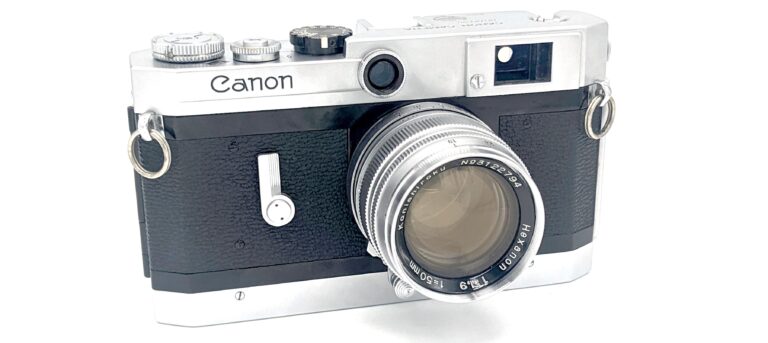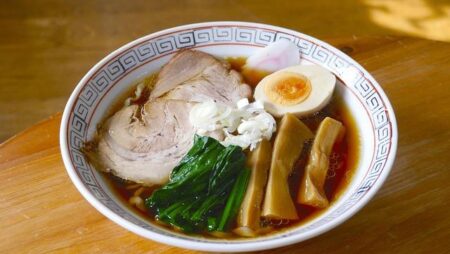In the ever-evolving world of photography, enthusiasts and collectors continually seek out tools that blend heritage with craftsmanship. The latest episode of JCH Youtube Camera Geekery shines a spotlight on Canon’s iconic rangefinder cameras, exploring their pivotal role in the history of Japanese camera manufacturing. Hosted by Japan Camera Hunter, the video delves into the technical innovations and timeless design that have made these models coveted among photographers worldwide. This detailed examination offers viewers both a nostalgic journey and an insightful look into Canon’s legacy within the rangefinder community.
JCH Youtube Explores the Legacy of Canon Rangefinder Cameras in Classic Photography
Steeped in the rich history of Japanese camera craftsmanship, Canon’s rangefinder cameras have long stood as icons among classic photography enthusiasts. This latest JCH Youtube feature dives deep into the innovative designs and enduring legacy of these legendary models, exploring how Canon deftly combined precision engineering with intuitive controls. From the early Canon IV Sb to the renowned Canon P, the video highlights the technological leaps that helped shape the mid-century photographic landscape. Photography purists will appreciate a detailed breakdown of the lenses, shutter mechanics, and viewfinder clarity that set Canon rangefinders apart from contemporaries.
Beyond technical prowess, the piece captures the emotional connection many photographers share with these cameras – tools that encouraged creativity through both durability and simplicity. The segment also touches upon how collectors and modern film photographers keep this legacy alive by restoring and shooting with Canon’s timeless cameras. Key takeaways include:
- Compact form factors designed for spontaneous street photography
- Innovations in shutter speed and flash synchronization that enhanced performance
- Legacy lenses like the 50mm f/1.8 that deliver compelling image quality
| Model | Introduction Year | Notable Feature | Collector Popularity |
|---|---|---|---|
| Canon IV Sb | 1951 | Focal plane shutter | High |
| Canon P | 1959 | Dual viewfinders | Very High |
| Canon 7 | 1961 | Built-in light meter | High |
Inside the Mechanics and Design Innovations of Canon Rangefinders from Japan
Canon’s rangefinder cameras, emerging from Japan’s post-war technological boom, revolutionized precision and portability in photography. Their mechanics hinged on a coupled rangefinder system, which allowed photographers to accurately gauge focus through a unique optical mechanism combining two separate images into one clear, sharp view. This innovation not only simplified manual focusing but also enhanced framing accuracy. Internally, the robust shutter assemblies and leaf shutter designs ensured consistent exposure times and durability, traits that made Canon rangefinders beloved among both amateur and professional photographers. The compact body designs cleverly integrated complex mechanical components without sacrificing ergonomics, setting industry standards for compact camera engineering.
Canon also pushed boundaries in design innovation by prioritizing user experience through intuitive controls and modularity. Features like interchangeable lenses with robust bayonet mounts provided photographers with versatility previously unseen in rangefinder cameras. Elements such as the bright viewfinders, parallax compensation systems, and finely tuned film advance levers underscored Canon’s commitment to precision and reliability. Notable design highlights included:
- Precision-ground rangefinder windows for enhanced focusing accuracy
- Seamless integration of exposure meters in select models
- Use of lightweight yet durable metal alloys in the chassis
- Ergonomic placement of manual controls for rapid operation
| Feature | Benefit |
|---|---|
| Coupled Rangefinder | Accurate and fast manual focusing |
| Bayonet Lens Mount | Easy and secure lens interchangeability |
| Leaf Shutter Mechanism | Quiet and reliable exposure control |
| Bright Viewfinder | Clear framing in varied lighting |
Expert Recommendations for Collectors and Enthusiasts Seeking Authentic Canon Rangefinder Models
When it comes to acquiring authentic Canon rangefinder models, experts emphasize thorough research and patience as the keys to success. The vintage camera market is flooded with replicas and heavily modified bodies, making provenance critical. Collectors are advised to focus on specific production years known for durable craftsmanship, such as the Canon IV and Canon P models from the 1950s and 60s. Additionally, working with reputable dealers or engaging with established communities like Japan Camera Hunter can mitigate the risk of purchasing counterfeit or non-original units.
Authenticity checks should include examining lens mount integrity, serial number consistency, and the condition of internal mechanics-items often overlooked by novice buyers. Below is a quick reference checklist for serious enthusiasts:
- Serial Number Matching: Cross-check with known Canon factory production logs.
- Lens Mount Authenticity: Look for wear patterns consistent with period use.
- Rangefinder Calibration: Ensure smooth focusing rangefinder mechanism.
- Shutter Speeds Accuracy: Verify all shutter speeds fire correctly and in sequence.
- Cosmetic Condition: Original paint and engravings speak to originality.
| Model | Production Years | Key Feature |
|---|---|---|
| Canon IV | 1951-1956 | First Canon 35mm rangefinder with Leica screw mount |
| Canon P | 1956-1961 | Improved viewfinder with frame lines |
| Canon 7 | 1961-1968 | Built-in selenium meter and Bayonet mount |
Key Takeaways
In conclusion, the latest episode of JCH Youtube Camera Geekery offers a compelling deep dive into Canon’s rangefinder cameras, shedding light on their enduring appeal among collectors and photographers alike. Through meticulous exploration and expert insights, Japan Camera Hunter continues to bridge the gap between vintage camera enthusiasts and modern audiences, preserving the legacy of these iconic devices. As interest in analog photography persists, such informed examinations ensure that the stories and technical marvels behind classic gear remain accessible and appreciated by a new generation.




